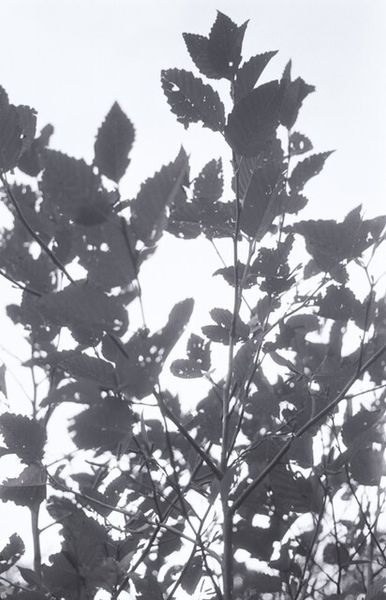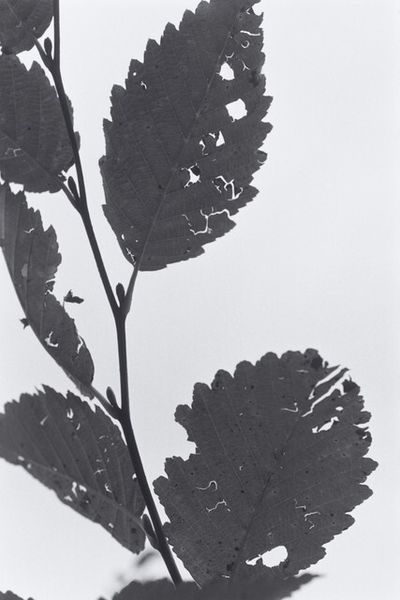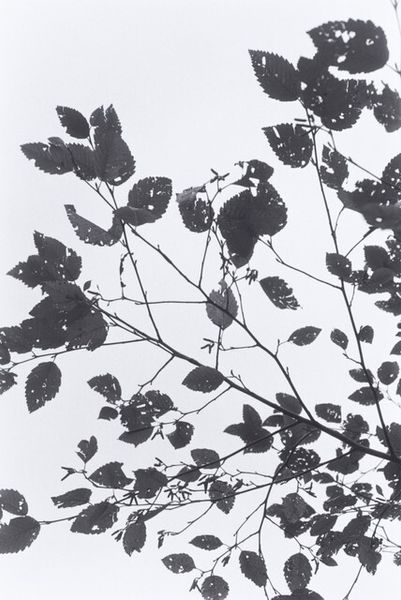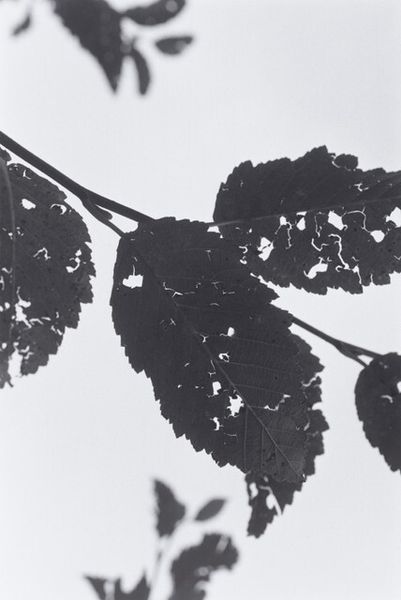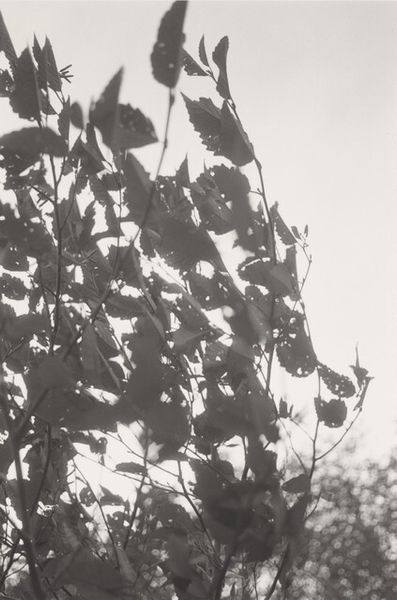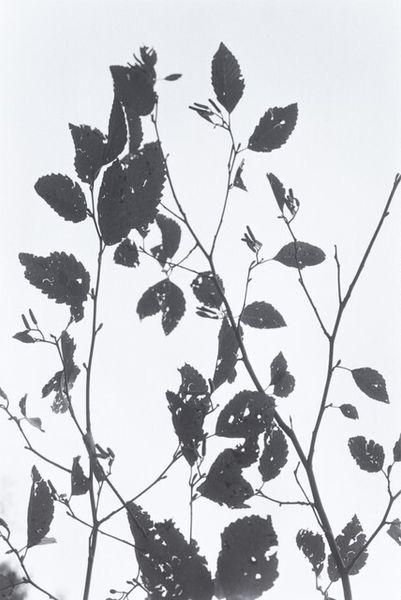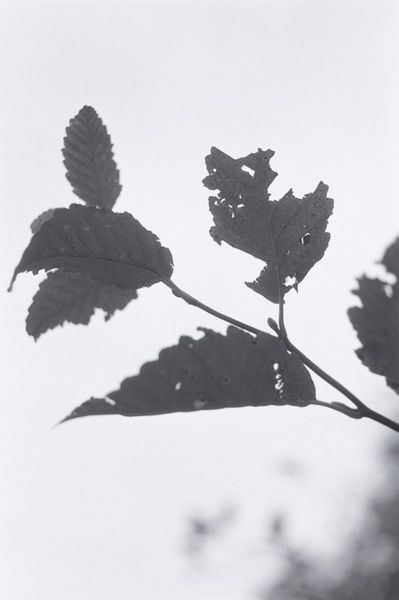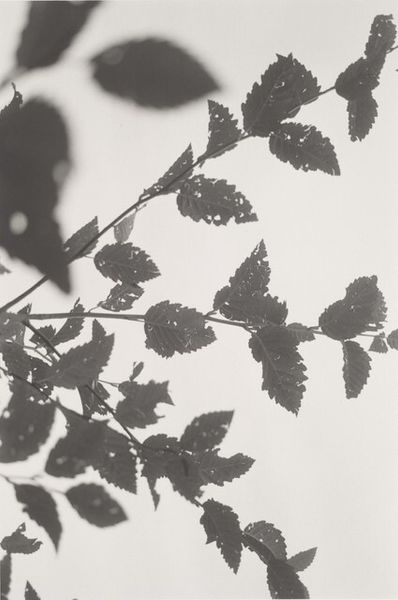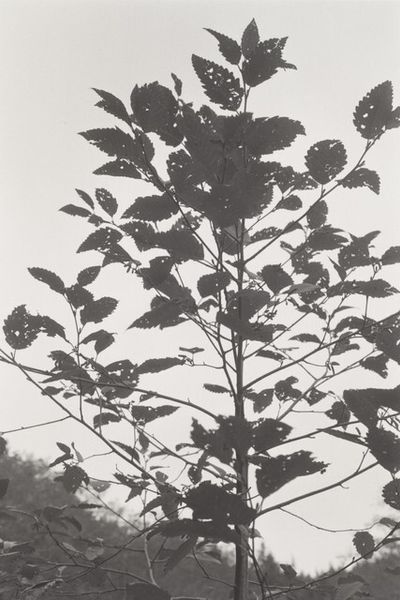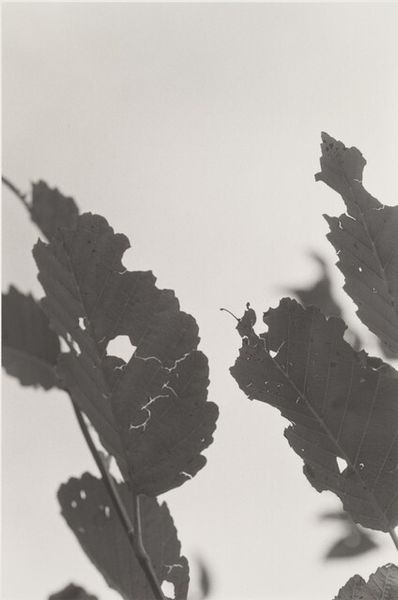
photography, gelatin-silver-print
#
organic
#
organic
#
landscape
#
photography
#
gelatin-silver-print
#
monochrome photography
#
realism
#
monochrome
Dimensions: image: 22.9 × 15.3 cm (9 × 6 in.) sheet: 35.3 × 27.8 cm (13 7/8 × 10 15/16 in.)
Copyright: National Gallery of Art: CC0 1.0
Curator: What a delicately rendered scene. This is Robert Adams's "Neahkahnie Mountain, Oregon" from 2004, a gelatin-silver print. Editor: My first impression is fragility. The stark monochrome and the almost skeletal leaves... it feels incredibly vulnerable. Curator: I think the gelatin-silver process emphasizes that feeling. Adams was known for his focus on the environment and how industry and humans shape it. Considering gelatin, derived from animal collagen, plays a key role, it reminds us of the complex interactions of living beings used to represent it. Editor: Right, and Oregon has such a fraught environmental history, particularly around logging and resource extraction. Seeing this level of detail, it makes me think about accessibility, about who has the privilege to appreciate this landscape, given the history of exclusion and exploitation. Curator: He often worked in series, which allows viewers to consider context deeply through repetitive observation. Looking at the process behind gelatin-silver prints, where light essentially etches the image onto the paper, it feels incredibly analogous to natural weathering. Editor: I appreciate how you’ve articulated that weathering effect—it definitely resonates. But also, those holes in the leaves, they make me think about ecological damage, about invisible forces eating away at the natural world, especially within a Capitalocene reading. Are they wormholes, pollution damage, or the simple entropy? Curator: Yes, that degradation can speak to that damage. It gives way to discussions on our environmental interactions by bringing those themes to the surface and reminding the consumer that mass manufacture still leads back to a primary material that has been cultivated, exploited and consumed to bring the consumer pleasure or functionality. Editor: Indeed, seeing art this way demands critical engagement with our own consumptive tendencies, and it challenges us to question our relationship to the environment. It’s a sober assessment but valuable lens through which to appreciate not only nature's elegance but the precarious conditions it’s in. Curator: Precisely. It shifts us beyond sentimentality toward action. Editor: Well, let’s hope it instills just that, now doesn’t it.
Comments
No comments
Be the first to comment and join the conversation on the ultimate creative platform.


